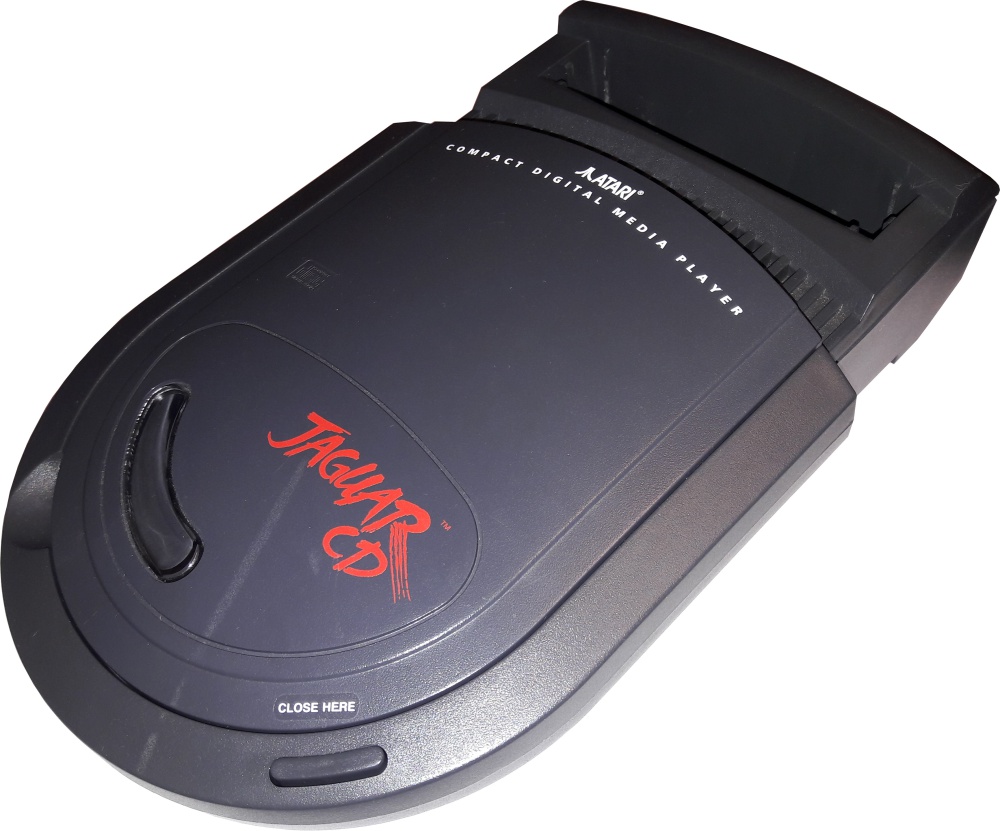|
This CD add on was priced at £149.99, the device fits on top of the Jaguar console, and attaches via the console's cartridge port, it is powered by a separate PSU. The machine also has its own cartridge slot, which is a pass through, so the machine can use Jaguar cartridges without being unplugged, it is also used for the Memory Track Cartridge, which saves the progress of the larger CD games.
Jaguar CDs can hold up to 790MB of data, much more than conventional CDs, and has built-in VLM (Virtual Light Machine) software written by Jeff Minter. Using a Spectrum analyser, the VLM provided a sophisticated video light show when an audio CD was played in the machine.
The machine came packaged with two software titles, Blue Lightning and Vid Grid. The former was a game based on the excellent Lynx title, but was a very ropey introduction for the machine, the latter was a tile puzzle game, also in the box was a Tempest 2000 audio CD and a demo disc for Myst.
The drive was manufactured by Philips, and contrary to popular belief is actually very reliable, non working drives can quite easily be fixed most of the time, by just prising the spindle upwards gently, if a disc is pushed down too hard
20,000 units were initially supplied and reportedly sold into retail, more were supposed to be manufactured, but it is possible that the first shipment was also the last.
Unfortunately the machine does look uncomfortably like a toilet when on top of the Jaguar console, and also some games need to have the Memory Track cartridge in the CD unit's cartridge slot, which makes it look even more WC like, as the cart looks like a cistern.
Only 11 titles were released, though titles continue to be made for the machine via the homebrew scene, the latest in 2017.
This unit is the case only, all the electronics are missing, if you happen to have a mechanism you are able to donate, please contact us.
Date : 21st September 1995
Manufacturer : Atari
Format : CD ROM
Physical Description : Case Only
This exhibit has a reference ID of CH47026. Please quote this reference ID in any communication with the Centre for Computing History.
|
|
 Click on the Image For Detail
Click on the Image For Detail
|






















